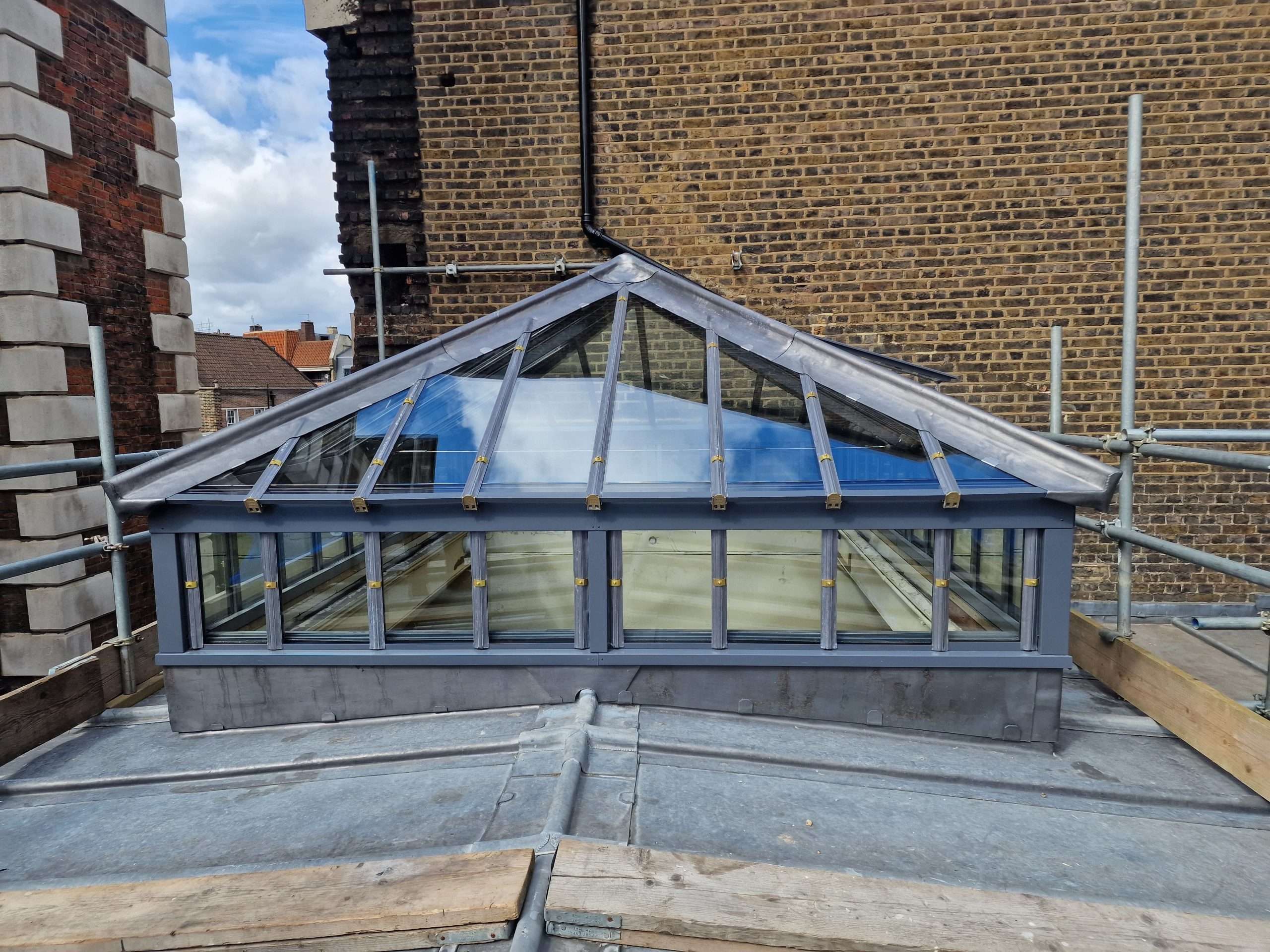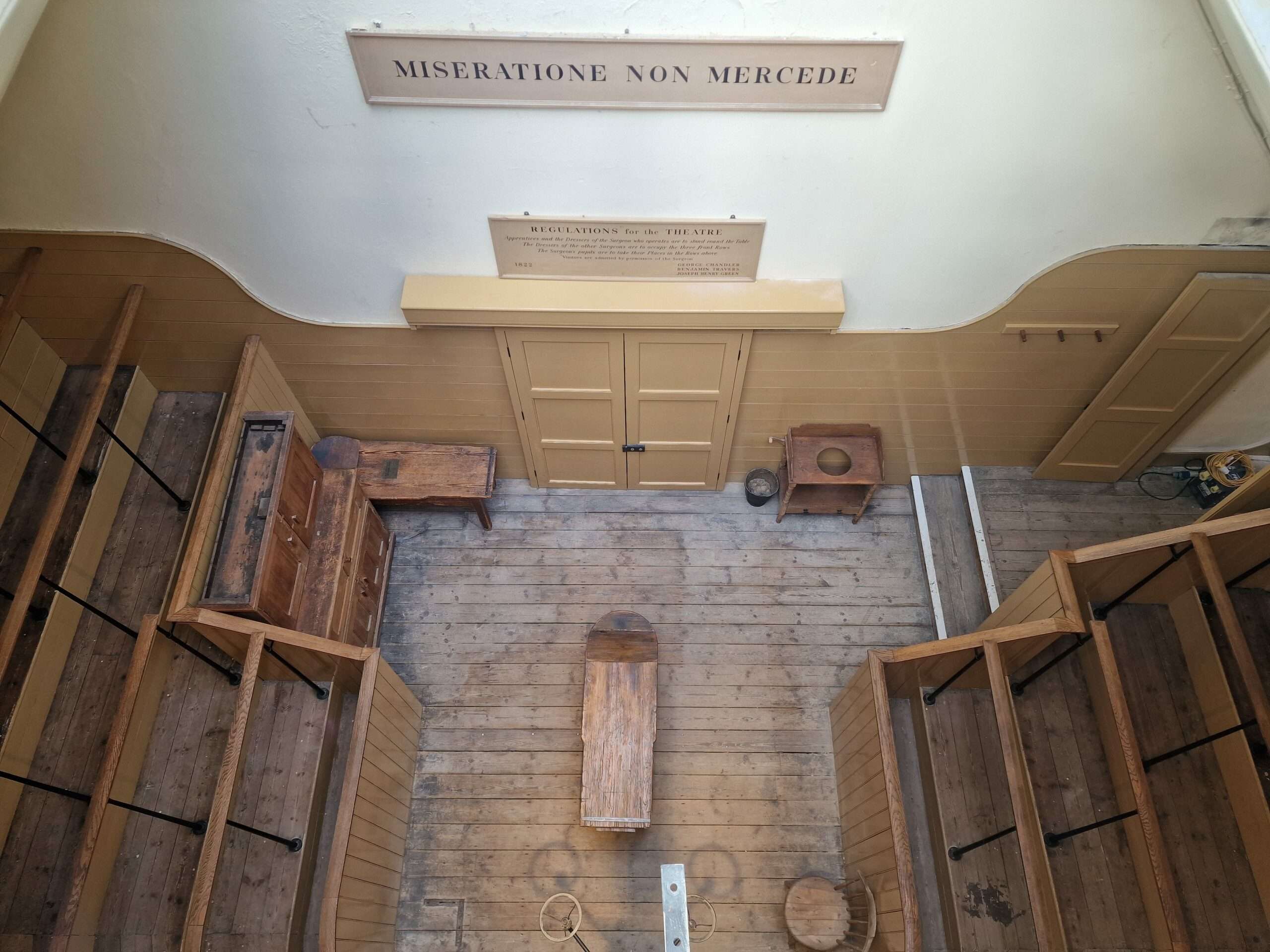Sarah Corn, director of the Old Operating Theatre Museum, tells us about the history of the hospital and the museum’s latest restoration project – made possible by government funding, along with a contribution from the landlord and the museum trust itself.
Light now floods into the museum once again, with the introduction of a visually-sympathetic steel and aluminium-hipped roof lantern skylight.
Corn has worked in the sector for nearly 20 years, having been drawn to museums with intrigue and excitement at university. Visiting the Old Operating Theatre as a student, she says: “Those spiral steps never left me”, so had to apply for the director role.
The Biscuit: Firstly, please tell us the story of the skylight…
Sarah Corn: The original Georgian skylight (installed when the operating theatre was built in 1822) made countless operations possible.

When the operating theatre opened, electricity was not yet in use and operations took place, one after the other, in the hour between noon and 1pm, with the sun at its height and daylight pouring in; the skylight played an essential role in enabling the surgeons to better see their patient and perform the operation.
What were operations like in the 1800s?
Before the arrival of anaesthetics, all operations had to be quick, a matter of minutes, which limited surgeons to only a few procedures, such as lithotomies (the removal of bladder stones), trepanations (drilling a hole into the skull), and amputations (the removal of a limb or external tumour). These operations were carried out as a last resort to save a patient’s life, and while the whole process could be gruelling and painful, at least the patient had a chance of survival. The three main causes of death were shock, blood loss and infection.
Anaesthesia was introduced in 1846 and allowed surgeons to perform deeper surgery that could take longer. But this increased the chance of the patient contracting an infection because, until the 1860s, there was no understanding about how germs spread, so very little effort was taken on general hygiene.
How was the theatre used?
The theatre in the roof of St Thomas’ Church, part of the old St Thomas’ Hospital, was only for female patients. It wasn’t general practice for the patients to be separated when it came to operations. But, at the time St Thomas’ Hospital was in use, it initially only had one operating theatre, and that was over the other side of the large hospital complex (it stretched from St Thomas’ Street, Borough High Street, Tooley Street to just before where the Shard is located), meaning it was too tricky to transport patients.

Therefore, operations were performed on the ward, which was not only very unsettling for other patients, but it also didn’t provide enough space for student surgeons to observe an operation and learn their craft.
The governors decided it was time to expand and so identified the roof space of the church, which was being used to store and dry herbs, as an ideal location. The new theatre was entered directly from the Dorcas Ward on the top floor of the hospital. A door in the middle of the west wall was used to bring patients in from the ward, and a small antechamber next to the theatre opened onto a staircase where others attending entered from the main hospital grounds.
What can visitors expect from the restored skylight?
The new skylight has opening and closing vents to allow a breeze to pass through the space, and soon, a new blackout blind will be installed, which will help keep excess heat out, but hopefully, some warmth in during the colder months. This allows us to better control the environment for our visitors, but also the collection itself.
Plus, the new skylight has clear glass meaning visitors can get a great view of the Church tower and even peak the top of the Shard.
oldoperatingtheatre.com
9a St Thomas Street, SE1 9RY
Check out the museum’s new virtual tour here: https://my.matterport.com/show/?m=AYxnkDEsz6T






